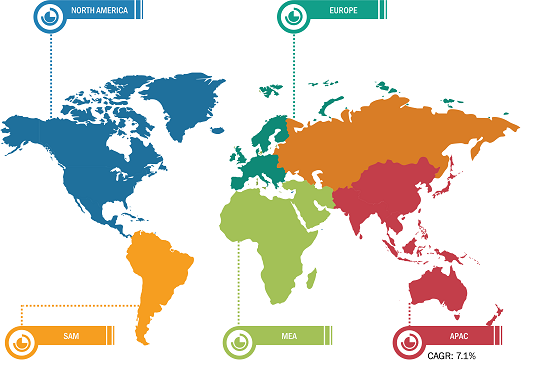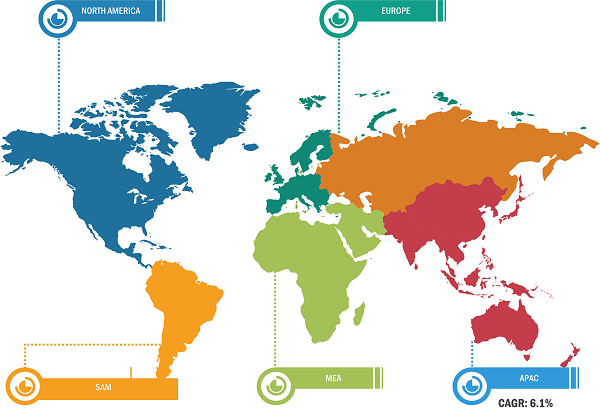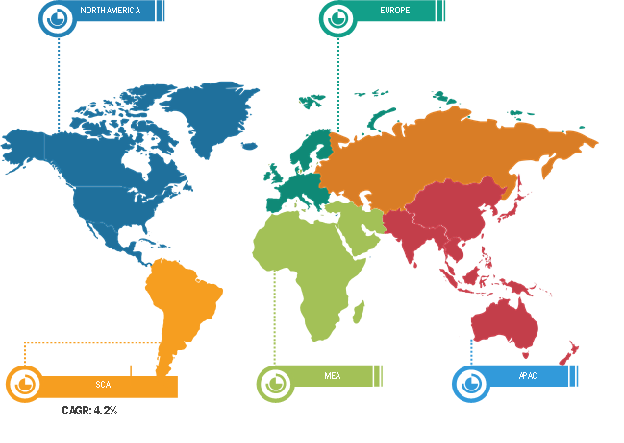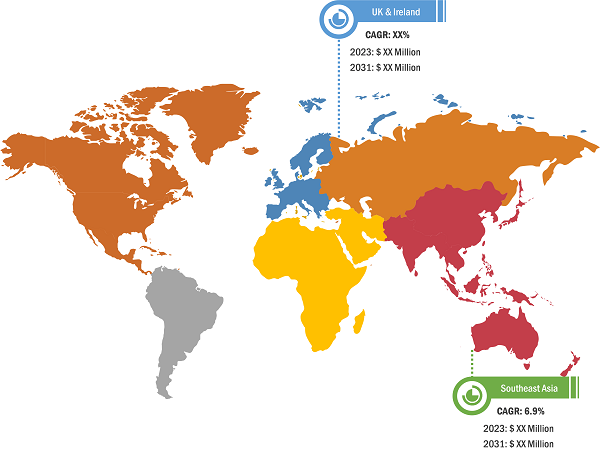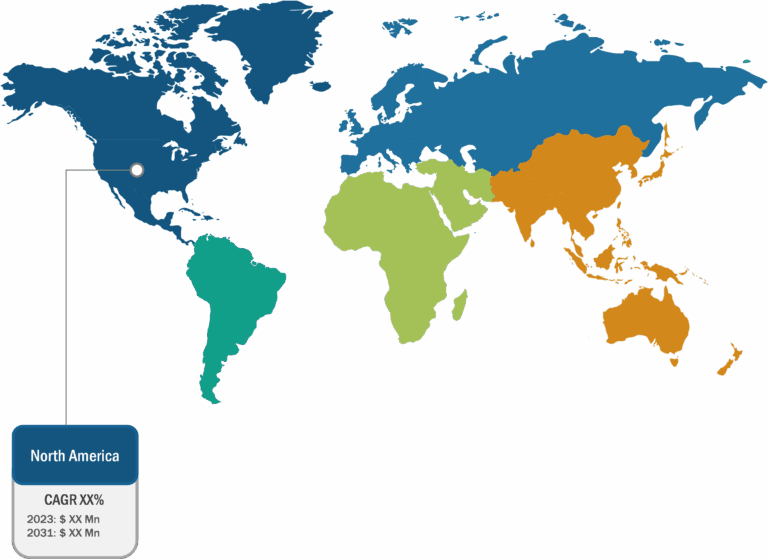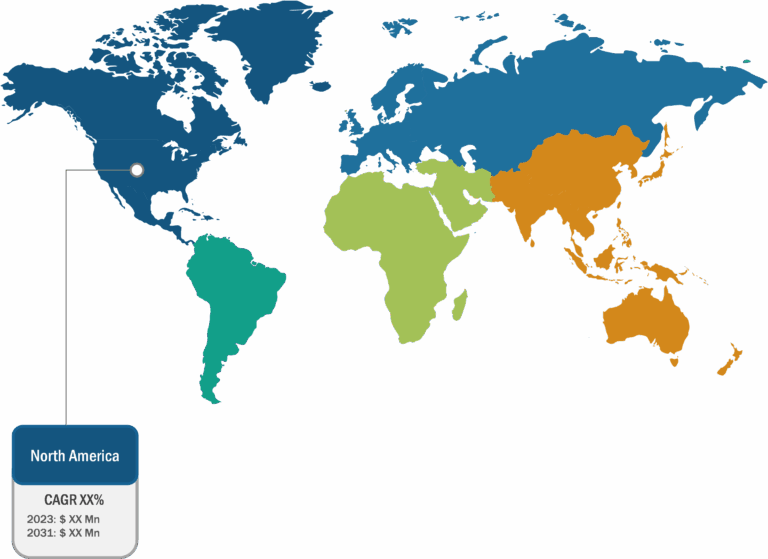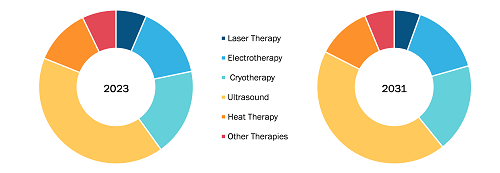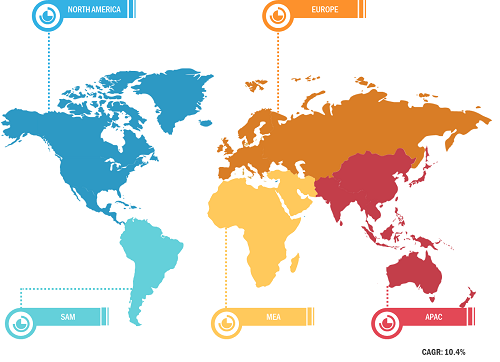
Human Milk Fortifier Market
In 2022, North America accounted for the largest share of the global human milk fortifier market. The market in the region is segmented into the US, Canada, and Mexico. There has been a growing awareness among healthcare professionals and parents about the benefits of human milk fortifiers for preterm infants in North America. Human milk fortifiers are used to enhance the nutritional content of breast milk, providing essential nutrients that are often lacking in the milk of preterm mothers. As product awareness is increasing, more healthcare facilities and parents are opting for human milk fortifiers, driving the market. North America has observed a rise in the preterm birth rate in recent years. Preterm infants are at higher risk of nutritional deficiencies and require specialized nutrition to support their growth and development. Human milk fortifiers are crucial in meeting the nutritional needs of these infants, which has led to increased demand for such products. Also, developing advanced human milk fortifiers with improved formulations and enhanced nutritional profiles has contributed to market growth. Manufacturers have invested in research and development to create fortifiers that offer optimal nutrition for preterm infants. These advancements have increased the effectiveness and acceptance of human milk fortifiers among healthcare providers and parents.
Increase in Number of Preterm Births
In recent years, the number of preterm births has increased owing to changing lifestyles and chronic diseases such as diabetes and high blood pressure. According to the Centers for Disease Control and Prevention (CDC), in 2021, preterm birth affected ~1 of every ten infants born in the US. The preterm birth rate in the US rose from 10.1% in 2020 to 10.5% in 2021. The World Health Organization (WHO) estimated that ~13.4 million babies were born in 2020. The preterm birth complication is the leading cause of death among children under five years of age, responsible for ~900,000 deaths in 2019. Preterm babies may have breathing problems, feeding difficulties, development delays, cerebral palsy, and vision and hearing problems. The increasing number of preterm births has surged the demand for human milk fortifiers for the proper growth and development of infants. Many preterm infants need extra nutrients added to their mother’s milk. They often need extra protein, calcium, phosphorous, and salt to build strong bones and healthy organs. Human milk fortifiers help provide these extra nutrients to infants. In human milk fortifiers, additional nutrients are added to the milk before it is fed to the babies. Thus, a surge in preterm births bolsters the human milk fortifier market growth.

Human Milk Fortifier Market: Segmental Overview
Based on form, the human milk fortifier market is segmented into powder and liquid. The powder segment is expected to register a higher CAGR during the forecast period. Human milk fortifiers in the powdered form supplement and enhance the nutritional content of breast milk. Fortified breast milk is prescribed to premature or medically fragile infants. People prefer powdered human milk fortifiers for their storage, handling, and preparation convenience. These fortifiers are easier to store and transport than liquid products while ensuring a longer shelf life.
Based on distribution channel, the human milk fortifier market is categorized into online and offline. The online segment is predicted to register a higher CAGR during the forecast period. Online retail stores are associated with the convenience of shopping from the comfort of one’s home. Parents can browse and purchase human milk fortifiers at any time suitable for them without visiting a store. Also, online platforms often provide them access to a broad range of fortifiers, allowing parents to explore various options and choose the most suitable product.
Impact of the COVID-19 Pandemic on Human Milk Fortifier Market
The COVID-19 pandemic affected economies and industries in various countries due to lockdowns, travel bans, and business shutdowns. The human milk fortifier market suffered severe disruptions in supply chains and witnessed shutdowns of many processing, wholesale, and smaller retail businesses in the initial phases of the COVID-19 pandemic. The COVID-19 pandemic hindered the supply chains, manufacturing, delivery schedules, and goods sales. However, after the relaxation of lockdown measures, human milk fortifier sales surged.
Human Milk Fortifier Market: Competition Landscape
The major players operating in the global human milk fortifier market include Abbott Laboratories, NeoLacta Lifesciences Pvt Ltd, Nestle SA, Prolacta Bioscience Inc, Lead Care International Ltd, Raptakos, Brett & Co Ltd, NeoKare Nutrition Ltd, Danone SA, Neolac Inc, and Reckitt Benckiser Group Plc. Players operating in the global human milk fortifier market focus on providing high-quality products to fulfill customer demand. They also focus on strategies such as investments in research and development activities, new product launches, and expanding production capacities.
Key Developments
- In January 2022, Prolacta Bioscience introduced human milk fortifiers in Japan. The launch was aimed at entering the untapped market in the country and helping improve the health of newborn babies.
- In November 2020, Lifeblood Milk and South Australian Health and Medical Research Institute (SAHMRI) entered into collaboration with CSIRO, Australia’s national science agency. The partnership aimed to develop human milk fortifiers to improve nutrition and growth in preterm babies.
- In September 2021, Neolacta Lifesciences Pvt. Ltd launched its products on e-commerce platforms to ensure easy availability of its products such as Neolacta Human Breast Milk and Neolacta MMF (Mother’s Milk Fortifier) to parents.

